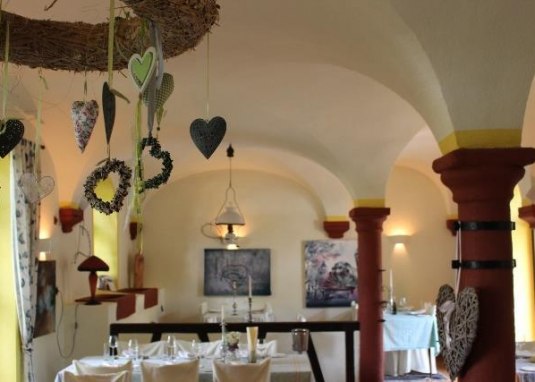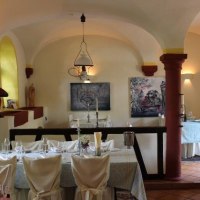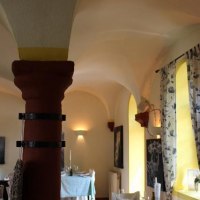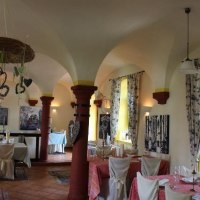The farmstead, which was built in the 1920s, offer a cross vault cellar which was reconstructed into a restaurant which can host up to 50 persons.
General information about Rheinhessencow chapels
The origin of the typical Rheinhessen vaults goes back to the early 19th century. At that time, farmers wanted to increase the yield of their cattle by keeping them in stables and use the leftovers as fertiliser for their fields. Initially, the cattle were housed on the ground floor of the half-timbered houses, above which hay and straw were stored. However, this method often led to fires, which the farmers wanted to avoid at all costs. In addition, the wooden beams of the houses rotted particularly quickly due to heat and evaporation and diseases found a breeding ground. In the course of secularisation, during which, among other things, church properties were nationalised, farm animals moved into cross-vaulted cellars for the first time. Light brick was easy to work with and did not rot, and it was also fireproof and more hygienic. Another reason for this construction method is the well-tried statics, which made it possible to roof even larger rooms without collapsing, thus creating space for more livestock. Since this construction method was previously only known from churches and monasteries and had a sacred character, a new name was quickly found: The Cow Chapel! Until the end of the 19th century, this type of construction became a status symbol in Rheinhessen, before cast-iron bars replaced the vault




